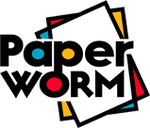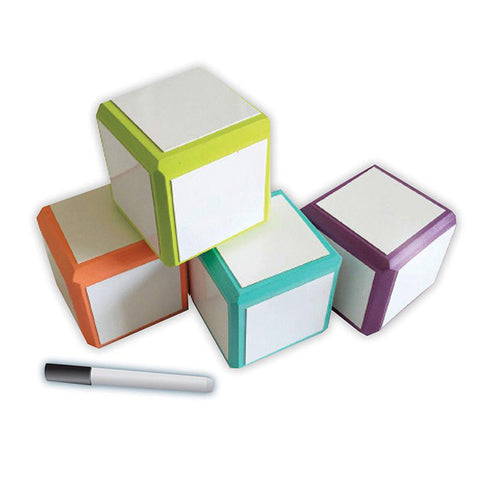Learn about the layers of the rainforest, soil and the water cycle when fitting this 101 piece Eco-Puzzle™ together! Puzzle includes 15 sparkly pieces and 15 fuzzy pieces to easily identify water, animals and plants. Also contains a full size poster and 4-page rainforest guide!
GUIDE TO THE RAIN FOREST
Learn about the layers of the rain forest, soil and the water cycle when fitting this 101 piece Eco-Puzzle™ together! Puzzle includes 15 sparkly and 15 fuzzy pieces to easily identify water, animals and plants. Puzzle includes a full size poster and a 4 page rain forest guide. Completed puzzle size measures 24” x 30” Puzzle is designed for children ages 4 to 9.
WATER CYCLE
The water cycle explains how water is continuously moving from the atmosphere to above and below Earth’s surface. Throughout this cycle, water changes into liquid, solid or gas. When rain falls to the ground, this is called precipitation. For colder climates, water will formulate into snow, sleet or hail. Once water reaches the ground, infiltration occurs. This is when water soaks underneath the ground and into the soil. Runoff occurs in areas where there is excess saturation or matter that does not absorb well, water will flow over the ground’s surface. Water will reach its way back into the atmosphere through evaporation. This is when the heat of the sun causes water from places such as oceans, lakes, rivers or moisture in the soil to turn into a gas and then rise up into the sky. Water also returns to the atmosphere through transpiration. Transpiration occurs when the sun evaporates water from plant leaves, stems and flowers. Water will then turn back into a liquid from a gas in the atmosphere and create clouds which is called condensation. Now we are back to where we started and the cycle repeats!
FOREST LAYERS
Overstory layer consists of the largest, tallest and most dominantly emerging trees.
Canopy layer is created when individual plant crowns come together, and where many animals form their habitat.
Understory layer is shaded by the overhead canopy; therefore this area contains plants that can live with little sunlight exposure.
Forest Floor is one of the richest areas of the ecosystem as it is filled with decomposers and fallen vegetation.
SOIL LAYERS
When you dig a hole deep enough, you will begin to see changes in color and texture in soil layers. Soil layers are commonly known as soil horizons, which are normally parallel to the soil crust. Depending on what part of the world you are in, and the climate in that area, there are different variations to the soil horizon classification system.
The O horizon, or humus layer, is organic matter generated from decaying plants, leaves and animals. It is naturally a dark brown or black color.
The A horizon, or topsoil layer, is where most microorganisms live. It is normally the top 2 to 8 inches of the most outer layer of soil.
The E horizon, or eluviation layer, is composed of minerals such as quartz that are broken down into small pieces creating sand and silt. This area is known for having a light color.
The B horizon, or subsoil layer, contains the most iron, aluminum and silicate clays. This is caused by water running through the above horizons and pushing these materials downward which is a process called illuviation.
The C horizon, or regolith layer, consists of dust, broken rocks and loose soil that covers the solid bedrock underneath.
The R horizon, or bedrock layer, is the bottom or base of the soil horizons made of large and hard rock masses.
ANIMAL FUN FACTS

Hummingbirds rely on flower nectar to provide energy for their hovering flight and high metabolisms. They get their name from the high frequency humming sound audible to humans when flapping and beating their wings.

The bird of paradise species is known for their extravagant plumage, a term commonly used for feathers, on males. These elongated feathers extend from the head, beak, wings or tail in order to attract female mates.

The toucan has a long beak which allows them to reach deep into tree holes to access food that other birds cannot get to. Their diet consists mostly of fruit but they will prey on insects and small lizards if they have the opportunity.

The cockatoo is a species of parrot that enjoys eating seeds, flowers and insects in large flocks when ground-feeding. You can find their nests in tree hollows!
The macaw is a long tailed and colorful species of parrot. Their facial feather pattern is as unique as our human fingerprints!

The morpho butterfly has blue metallic shades of coloring on the dorsal, or top, of the wings. These beautiful colors are not natural and appear through light iridescence. The ventral side or underneath the wings are brown with eyespots, also known as ocelli.

Tree frogs are normally tiny and smaller than terrestrial frogs. They live their whole life in the trees and typically only descend to the ground to mate. Many different types of tree frogs can change color to camouflage themselves from predators.

The green tree python is primarily arboreal which means they live in trees, bushes and shrubs. They have a specific way of resting by looping around branches and placing their head in the middle. They can lay up to 25 eggs at a time!

The anaconda is the largest snake in the world by weight! It coils and constricts around its prey to crush their bones.

The sloth is normally hanging out in the trees and eating leaves as their main food source. Their tongues protrude 10 to 12 inches from their mouths so they can reach leaves easier! They are known for moving very slowly which is attributed to their metabolic adaptations for conserving energy.

The jaguar is a feline among the “big cat” species. They have an extremely powerful bite that can even pierce through the hard shells of reptiles such as turtles.

Capybaras are the largest rodents in the world. They have four toes on their front feet and three toes on their back feet! They are a very social species that live in groups of 10 to 20, but can be found grazing grass in groups as large as 100.

The tapir has hoofed toes, which help them walk through soft or muddy ground. They like to stay cool and keep insects off of them by spending time in mud pits.

The golden lion tamarin is unfortunately an endangered species. Its name comes from the extra-long orange hairs around the face similar to a mane. They have claw like nails called tengulae that help them cling to the side of tree trunks.

The yellow handed titi monkey can usually be found in pairs either sitting or sleeping together with their tails entwined! This species is one of many different kinds of titi monkeys.
PLANTS
![]()
The Heliconia is found in the Tropical Americas.

The Kapok Tree is found in Mexico, Central America and Tropical West Africa.

The Banana Plant grows in India, China and Southeast Asia.

Bromeliads can be found in the Tropical Americas.

The Xate plant grows in Mexico, Guatemala, and Belize.

The Strangler Fig can be found in Southern Mexico, the U.S. State of Florida, and the Northern and Western Caribbean.

The Brazil Nut Tree grows in Brazil, as well as Venezuela and Eastern Columbia.

The Areca Palm is found in China and India.
Delivery Processing Time
All orders are processed within 1-3 business days. Orders are not delivered on weekends or holidays.
If we are experiencing a high volume of orders, delivery may be delayed by a few days. If there will be a significant delay in shipment of your order, we will contact you via email or telephone.
Delivery Rates
The delivery charges for your order will be as follows:
| Purchased Amount (excluding GST) | Delivery Charges (excluding GST) |
| $0.00 to $80.00 | $8.00 |
| $80.01 & Above | Free of Charge |
PaperWorm only delivers within Singapore except:
- Jurong Island
- Sentosa Island
- Alps Avenue/Airport Cargo
- PSA Terminals
- Jurong Port
- SAF Camps or Homeland Defense sensitive installations
- Shipyards
Can I make changes to my items or delivery address after order has been done?
While we will try our best to accommodate your request for changes, it might lead to a delay in the delivery. However, do note that we reserve the right to reject changes as well due to operational constraints. For delivery address changes, please contact us at contact@paperworm.com.sg by 12pm the day before delivery.
Can I cancel my order?
Email to contact@paperworm.com.sg for any changes or cancellation to your order.
For purchases to be delivered overseas, please contact us at contact@paperworm.com.sg
Taxes
All displayed prices are subjected to prevailing GST. At checkout, total GST will be displayed and added to the total amount payable.








